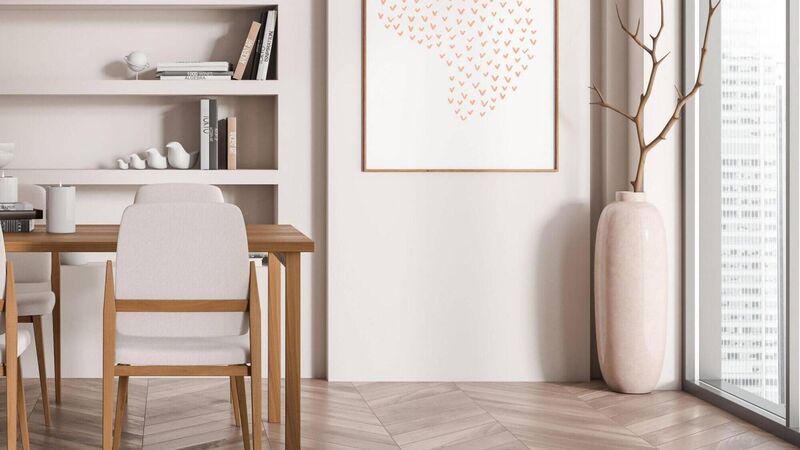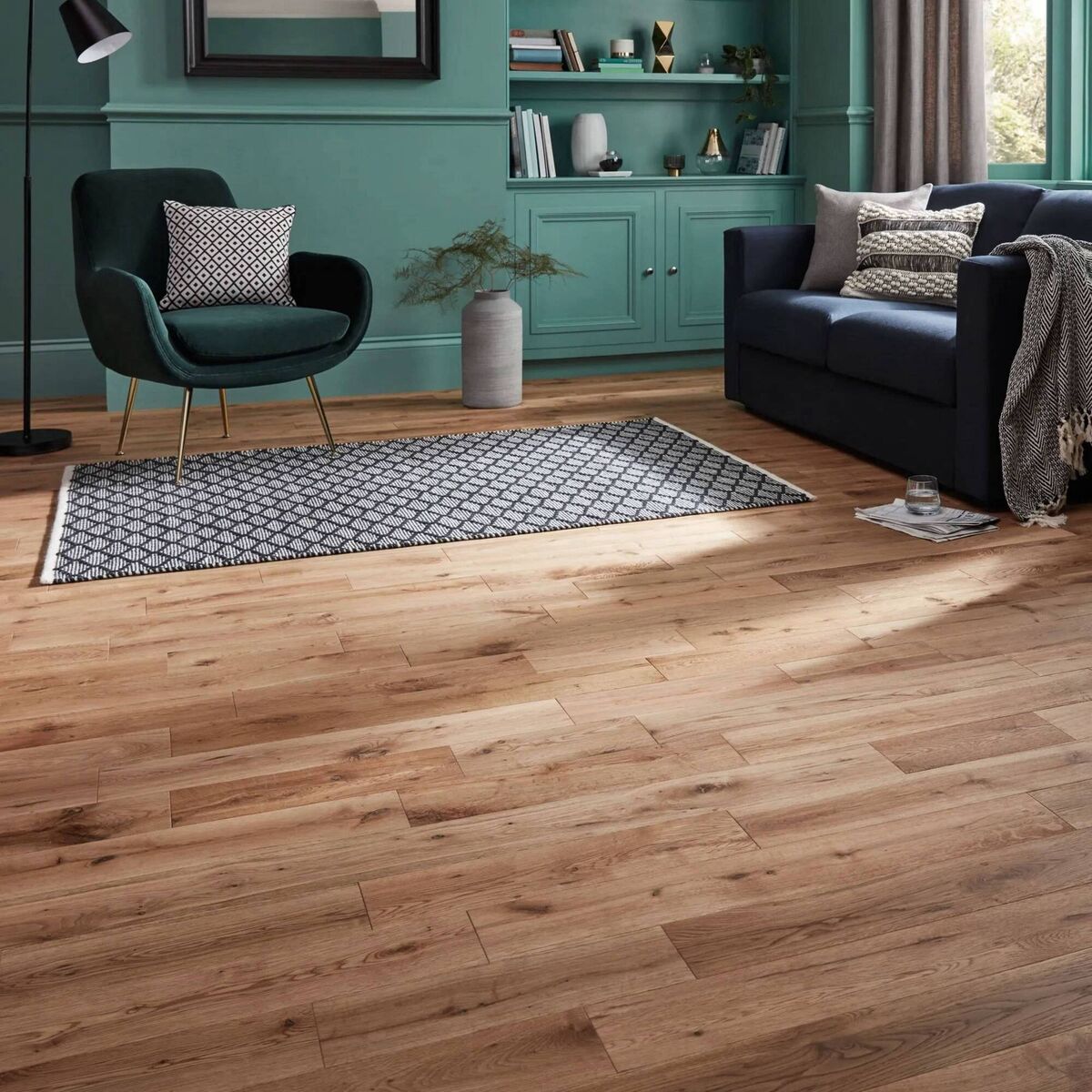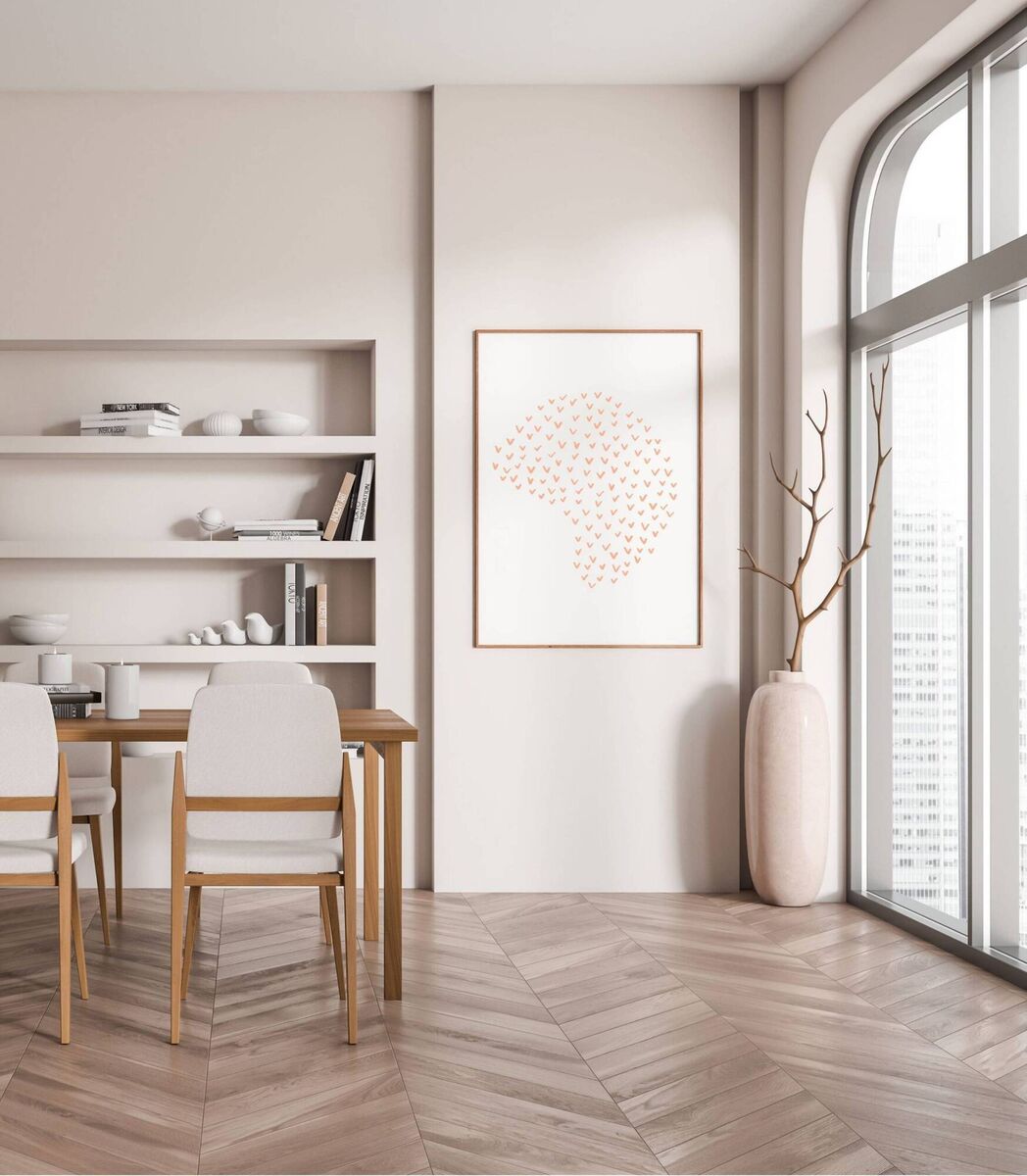Walk the plank: How to choose a wood floor to suit your home

Chevron and herringbone patterns have distinct differences in their pattern; Chevron flooring in European oak from €65 per metre, Wood Flooring Ireland.
So you're all set to walk the decks and go with wood-style flooring. By now, you will have set your price point between the investment of solid timber, the structural integrity and versatility of engineered wood flooring, or vouched for an economic laminate pretender. Still, what about the style of the floor — those board widths and more complex pattern possibilities? Is one look superior to another — trending, more enduring, simply chicer? Here are just a few tips to guide your steps.
The width and positioning of your boards have the power to create a more expansive or slightly more comfortable space. There’s a huge choice in widths covering 120mm to 240mm.
Just as with tiling, smaller elements (boards, blocks or square panels), will result in more boards, more seams and more visual stutter. That said, most plank flooring is laid with the planks (or faux planks and blocks) meeting tightly, and with light washing down a pale floor, the presence of the joints will be less troubling.
Let’s start wide — why choose a board with a broad width? Wide plank flooring is the best way to see beautiful timbers with their figuring, vertical grain, spirals, medullary rays and of course their colour on glorious show. Not sliced into busier sections, they deliver a statement floor with fewer seams to catch grot.
As they are bigger and heavier in a solid or engineered variety, they have a high structural integrity, making it less likely that they will separate, cup or bow. In a very large space, truly wide boards will bring the room home a little, decreasing its apparent acreage by breaking the floor into fewer pieces than a narrow board would do.
Wide boards require long planks, and in solid timber, including reclaimed varieties, these are instantly recognisable as a premium choice, delivering unique detail in a hand-scraped surface. As buyers, we are programmed to see skinny boards as cheaper, more commonplace products, when it’s largely just a matter of taste. Real wood flooring in wide planks will demand a professional installation for face nailing and T&Gs — however, for a skilled carpenter, it provides fewer planks to finish the space.
Don’t expect the job to cost less — chances are it won’t. Together with exquisite cutting, the sub-floor prep and floor levelling must be spot on. Flooring in 220mm-240mm varieties is best left to grander spaces where their dimensions can breathe. With underfloor heating (UFH) ensure this or any flooring you are considering has the required dimensional stability and heat-emission characteristics to match.

Middle-sized planks from 150mm to 190mm will suit a variety of situations, both contemporary and period. If you want the planks to look narrower without dipping down to 120mm varieties, choose a darker, regressive colour. Plank flooring of 120mm remains a classic and will suit the scale of small to moderately sized homes. In shorter, slim or finger planks it recalls the sprung floors of 20th-century dance-halls. Wide or skinny, it’s usual to lay plank flooring, parallel to the longer side of the room.
Quick-Step advises: “As a general rule, make sure to lay your floor in the same direction as the main light source in a room and in the same line as the most frequently used entrance. If there are several doors and windows, then opt for the direction that’s the easiest to install.”
If you lay the flooring across the light, it will be staggered over the seams, creating shadows, and obscuring the beauty of the plank. Show your plans to your supplier for advice, as going in the wrong direction can be eye-catching (in all the wrong ways).
Herringbone and chevron floors are characterful and visually dynamic, but they are not necessarily aesthetic bullies. In pale colours in solid blocks, T&G engineered planks or as a cunning, floating laminate, they will still amplify light and throw back the walls as a plank would do. In darker shades, oiled or varnished genuine timber parquet evokes a soul-stirring luxury and warmth.
Blocks and short or longer planks can work well in a squeak of hall or a living space the size of a ballroom — but here’s the point. Herringbone offers a geometric zig-zag design that works itself across the floor in all directions (end of a plank against the top-long edge of the other plank). Chevron flooring (cut at a 45-degree angle), has a V-pattern that signals in one direction in continuous broad sections, reading as diagonally stripped wide boards.
Use these distinctly tailored patterns to push the proportions of the room around a little. Pointing across the room, herringbone will make a room or corridor appear wider. Again, note the direction of natural light spilling into the room and aim to set the points running parallel with the light, or in the case of multiple aspects, using the direction of the longest wall to add depth to the room’s dimensions.
Aesthetically, it could be argued that Chevron patterns have more modernity. Confused by parquet? Chevron, herringbone and ornate squared-up Versailles panel designs were originally applications of historic parquet block flooring. With square panels, you won’t have to worry about the direction of the floor being laid.

It will be started and finished just like a large format porcelain tile would be. They are relatively busy with an interwoven pattern of triangles and squares. Test them in smaller spaces, as square metres of an opulent Louis XIV style could prove to be just overwhelming. Featuring a softwood base and hardwood face they are costly (prices start in the area of €110 per metre).
So, what about length? Random length flooring is not only less expensive but deliberately varies where the ends of the boards land in a solid timber or engineered floor. More economical to buy, they cover most flooring on offer including salvaged floors. This random, staggered style is just a little more casual to the eye, avoiding the stiff appearance of deckiƒng with regular joins at every second board splicing across the room.
That said, some designers prefer a structured (brick) pattern. In a package, the supplier will indicate the size of the shortest and longer board included in a random package. This might be as extreme as 0.6m and 3m, with an average plank coming in around two metres. In salvaged boards, the longest board may be as much as 4m, which is fine as long as the thickness is the same and any T&G is the same over all the planks.
There are a few things practical considerations. First of all, if you must nail individual long boards onto a joist below, they may need to be a set length. Secondly, using fixed or random lengths and attempting to avoid a set pattern can lead to extra wastage and a pile of short boards if you’re going DIY and simply don’t know what you’re doing.
Random width flooring (with fatter and skinnier planks and random lengths in the same depth) is another potential option if you’re looking for a uniquely crafted, relaxed floor that speaks to a time when we used what wood was available (both from the trunk and branches of the tree and reclaiming where possible).
A talented fitter will be able to make even a budget, packaged plank floor appear authentic, artisan— full of visual interest. Whatever floor you spring for, don’t skimp on a reputable carpenter.











